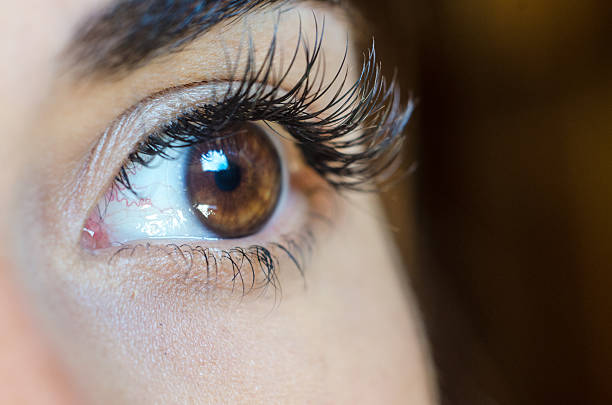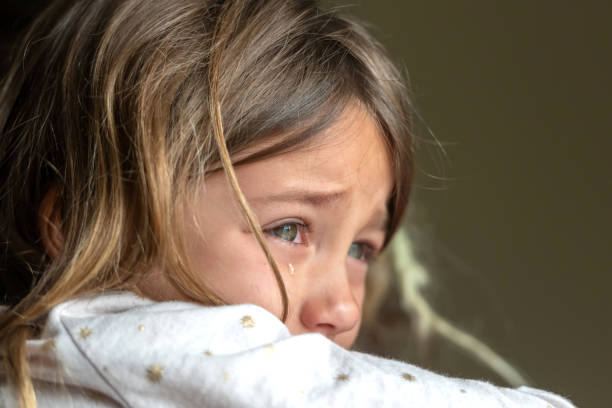How To Describe A Scary Clown in Writing (13 Best Ways)
Describing a scary clown in writing is a literary journey that delves deep into the heart of human fear and fascination.
Clowns, once heralded as the purveyors of laughter and delight, have morphed into nightmarish figures in popular culture, eliciting shivers instead of chuckles.
In the realm of storytelling, mastering the art of conveying the bone-chilling essence of these macabre jesters is not merely an exercise in vivid description but a dance with psychological intrigue and symbolism.
This guide explores the intricacies of capturing a scary clown’s presence on the page, from the intricacies of their appearance to the profound depths of their character, unraveling the threads that weave fear into laughter and inviting writers to craft a narrative that leaves readers both captivated and haunted.
So, let us embark on this journey through the written word into the unsettling world of the scary clown, where ink and imagination merge to create a haunting tapestry of terror.
How To Describe A Scary Clown in Writing
To describe a scary clown in writing, follow these step-by-step guidelines:
Observation
Begin by carefully observing the scary clown you want to describe. Pay attention to their appearance, mannerisms, and the atmosphere surrounding them.
Physical Appearance
Describe the clown’s physical features. Start with their face, noting the exaggerated makeup, including sharp, sinister lines, exaggerated smile, and creepy color choices like blood-red or sickly white.
Mention any scars, wounds, or deformities that enhance the fear factor. Describe their costume, emphasizing dark or tattered clothing, oversized shoes, and accessories like sharp objects or grotesque props.
Body Language
Discuss the clown’s body language and movements. Mention how they move in an eerie and unpredictable manner. Describe their exaggerated gestures, twitching, or jerky actions that create an unsettling vibe.
Facial Expressions
Detail the clown’s facial expressions. Note the twisted grin, maniacal eyes, or the way they contort their face to evoke fear. Mention if their expressions shift rapidly from humor to horror.
Eyes
Focus on the clown’s eyes, as they are often a focal point. Describe the eyes as cold, calculating, or empty. Note any bloodshot or unnatural eye colors.
Accessories
Mention any unusual accessories the clown carries, such as a rusty, serrated knife, a blood-stained handkerchief, or any props that add to their menacing appearance.
Environment
Describe the setting or environment in which the scary clown is found. Highlight any eerie details, like a dimly lit circus tent, abandoned amusement park, or a sinister funhouse.
Sound
Address any sounds associated with the clown. This could be maniacal laughter, eerie music, or the clown’s unsettling voice, characterized by a high-pitched, shrill tone or a sinister whisper.
Behavior
Discuss the clown’s behavior, emphasizing actions that invoke fear in others, such as stalking, sudden appearances, or engaging in sadistic pranks.
Emotions
Explore the emotional impact the clown has on those who encounter them. Describe the terror, unease, or panic they induce in people.
Metaphorical Language
Employ descriptive language and metaphors to enhance the imagery. Use words like “ghoulish,” “macabre,” “sinister,” “menacing,” and “nightmarish” to convey the overall sense of dread.
Sensory Details
Appeal to the reader’s senses by including sensory details like eerie smells, chilling temperatures, or the taste of fear in the air.
Tension and Suspense
Build tension and suspense in your description by gradually revealing the frightening elements and escalating the fear factor.
Remember to adapt these steps to your writing style and the specific details you want to emphasize. A scary clown description should create a vivid and spine-tingling image in the reader’s mind.
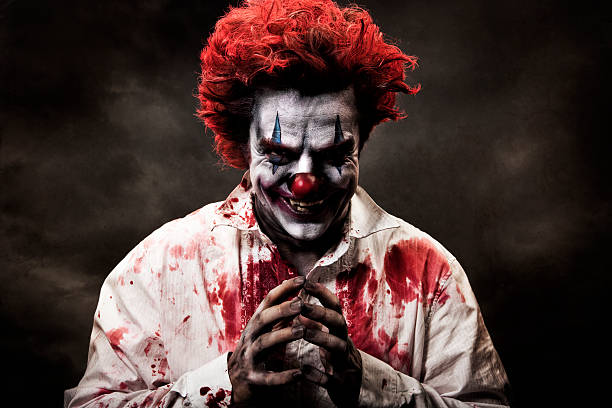
Understanding the Scary Clown Archetype
Understanding the scary clown archetype is like peeling back the layers of a carnival tent to reveal the dark underbelly of our collective psyche.
It’s a journey through history, laughter, and the uncanny; a descent into the mind’s basement, where the jesters of our nightmares lurk.
From the painted faces of jesters in medieval courts to the blood-soaked grins of modern horror icons, the scary clown has transcended time and culture, morphing into a symbol of both absurdity and abject terror.
Delving into this archetype is like embracing the paradox of our own fears, where the line between laughter and screams blurs, and where the absurd becomes a mirror to our deepest anxieties.
The history and cultural significance of clowns
The history and cultural significance of clowns is a rich tapestry woven with threads of laughter, intrigue, and occasional unease.
Clowns have a lineage dating back thousands of years, from the jesters in ancient Rome to the harlequins of the Commedia dell’arte in Renaissance Italy.
They’ve held diverse roles in different cultures, from entertainers to tricksters and even shamans. Clowns are not only emblematic of humor but also reflect societal attitudes.
Their exaggerated appearances and actions allow them to comment on social norms and taboos. However, clowns have a dual nature, and this dichotomy has often cast them in a different light – as both bringers of joy and purveyors of fear.
They’ve evolved in the collective consciousness, from the classic, endearing figures in the circus to the more recent, sinister portrayals in horror and popular culture.
This history and cultural significance remind us that clowns have a unique ability to mirror the complex interplay of human emotions, a profound reflection of our ever-changing relationship with humor and the uncanny.
The evolution of the scary clown in popular culture
The evolution of the scary clown in popular culture is a captivating journey through the shifting tides of our fears and fantasies.
Once the epitome of slapstick humor, clowns gradually metamorphosed into unsettling figures, embodying our darkest nightmares.
This transformation began with figures like Lon Chaney’s “He Who Gets Slapped” in the silent film era and reached its zenith with Stephen King’s “It,” where the malevolent Pennywise danced onto the scene.
Over the years, scary clowns have emerged as cultural symbols of our society’s unease, reflecting a world plagued by uncertainty.
From the silver screen to the dimly lit corners of our nightmares, they persist, a stark reminder that even in the realm of laughter, darkness can find its footing.
The psychological elements that make clowns scary
The psychological elements that make clowns scary tap into the intricate recesses of our minds, unsettling the very foundations of our understanding of humor and identity.
Clowns, with their exaggerated features, conceal their true selves behind masks of painted smiles and vibrant costumes, triggering an eerie sense of ambiguity.
Their unpredictability, a staple of their comedic performances, becomes a source of discomfort when it veers into unpredictability of a darker kind.
The uncanny valley effect arises when the clown’s appearance deviates just enough from the familiar to become profoundly unsettling, making it difficult for our brains to reconcile the conflicting emotions of amusement and dread.
Moreover, the concept of the “man behind the mask” fuels our primal fear of the unknown, as clowns challenge our ability to discern friend from foe, mirroring a fundamental human instinct to protect ourselves from potential threats.
All these factors come together, creating a psychological cocktail that gives clowns their power to terrify.
Pre-Writing Considerations
Pre-writing considerations are the canvas on which the masterpiece of your writing is conceived; they are the silent architects of your literary symphony.
Just as a sculptor must envision the final form before chiseling away at marble, a writer must define the purpose of their work, identify their audience, and select the narrative lens that will best capture the essence of their tale. It’s the moment when ideas crystallize, the spark that ignites the creative engine.
These considerations are the compass guiding your narrative voyage, ensuring that your words reach the intended destination with clarity and impact.
In the realm of writing, it’s not just about pen and paper; it’s about crafting a vessel to carry your thoughts across the boundless sea of imagination.
Developing a Mood and Atmosphere
Developing a mood and atmosphere in your writing is akin to painting with words, conjuring a sensory symphony that lingers in the reader’s mind long after the final sentence.
It’s the whispered promise of secrets in the shadows, the tingling sensation of anticipation under dim moonlight.
With the stroke of a pen, you can transport your reader to distant realms, enveloping them in the intoxicating scent of rain-soaked earth, the haunting echo of a melancholic melody, or the electric charge of a tense silence.
In this ethereal dance of emotions, your words become the brushstrokes that color the canvas of imagination, allowing your reader to not just read your story, but to experience it with every heartbeat and every shiver down the spine.
Utilizing sensory details to immerse the reader
Utilizing sensory details in your writing is the alchemy that transforms mere words into a multisensory journey for your reader.
It’s the delicate art of imbuing your narrative with sights, sounds, smells, tastes, and tactile sensations that transport your audience to the heart of your story.
By describing the vibrant crimson of a ripe apple, the sweet symphony of birdsong at dawn, the earthy aroma of freshly turned soil, or the gritty texture of sand between fingertips, you invite your readers to not just observe your tale, but to taste it, touch it, and breathe it in.
This immersion in the sensory tapestry of your narrative creates a visceral connection, allowing your audience to step inside the world you’ve created and experience it with a richness and depth that makes your story unforgettable.
Incorporating weather and lighting effects
Incorporating weather and lighting effects into your writing is like conducting a symphony of mood and ambiance.
Weather, with its capricious temperament, can be a powerful narrative tool, setting the emotional tone of your story. A sun-drenched meadow can evoke joy and serenity, while a thunderstorm raging overhead may mirror turmoil and conflict.
Lighting, on the other hand, can cast an enchanting spell or shroud your characters in mystery. The warm, golden glow of a sunset can envelop a scene in a romantic allure, while the harsh, unforgiving gleam of a spotlight can lay bare hidden truths.
By harnessing the atmospheric qualities of weather and lighting, you guide your readers through a sensory landscape, shaping their emotions, expectations, and understanding of your narrative, and, in turn, creating a vivid, unforgettable reading experience.
Physical Appearance
The physical appearance of a character is the gateway to their essence, a kaleidoscope of details that, when woven together, forms a vivid tapestry of identity.
It’s not merely about the color of eyes or the curve of a smile; it’s the art of unveiling a character’s history, aspirations, and even their hidden fears.
Physical appearance becomes a compass for the reader to navigate the labyrinth of your character’s soul, where every freckle, scar, or furrowed brow hints at untold stories and unseen battles.
It’s the secret language of your narrative, whispering tales of a life well-lived or a path yet to be trodden.
In this dance of description, every feature and imperfection is a brushstroke on the canvas of your character’s existence, inviting your reader to delve deeper, to unearth the beauty, complexity, and humanity that lies beneath the surface.
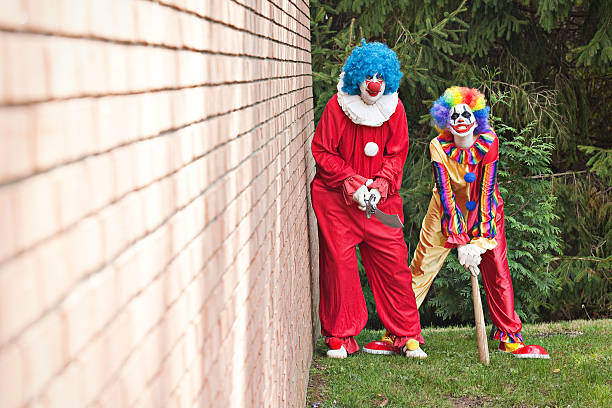
Describing the clown’s costume in detail
Describing the clown’s costume in intricate detail is like dissecting a work of art, each component a stroke of creativity that defines the character’s essence.
The riotous mishmash of colors, the oversized shoes that defy reason, and the cacophony of mismatched patterns all conspire to paint a picture of eccentricity and theatricality.
From the vibrant hues that scream for attention to the jingling bells adorning a polka-dotted collar, the costume is a visual symphony that communicates the clown’s playful, albeit disorienting, nature.
It’s not just fabric and frills; it’s the external manifestation of the clown’s quirky persona, a dazzling cloak that invites both laughter and unease, like a kaleidoscope of emotions stitched together.
In these intricate details, the soul of the clown is unveiled, layer by layer, inviting readers to embrace the enigmatic charm and underlying disquiet of the character.
Analyzing facial features and makeup
Analyzing a clown’s facial features and makeup is akin to deciphering a complex code written upon the canvas of expression. It’s a transformation that goes far beyond the physical, a metamorphosis that conceals and reveals in equal measure.
Every line, curve, and shade is a brushstroke of character, a window into the clown’s inner world. The exaggerated red nose, painted grin that never quite reaches the eyes, and stark white complexion all serve as a mask, obscuring the true emotions beneath.
Yet, within this artful camouflage lies a narrative waiting to be unraveled. The makeup and features work in unison to convey a paradoxical blend of joy and sorrow, luring readers into the intricate dance of laughter and melancholy that is the hallmark of the clown’s enigmatic persona.
It’s a study in duality, a visual riddle that beckons readers to explore the deeper, often haunting, layers of character and emotion beneath the surface.
Exploring the use of accessories (balloons, props, etc.)
Exploring the use of accessories, such as balloons, props, and other whimsical paraphernalia in the world of a clown, is akin to discovering the breadcrumbs of a hidden narrative within the performance.
These seemingly inconsequential items become portals to a realm of symbolism and storytelling. The vibrant balloons, whether playfully twisting into animals or slyly deflating, can signify the fleeting nature of joy and the inevitability of life’s ups and downs.
Props, like oversized shoes or a comically tiny car, carry the weight of tradition and absurdity, inviting us to partake in a timeless comedy that transcends language.
These accessories are not just objects; they are keynotes in the clown’s symphony, orchestrating a whimsical dance that mirrors the human condition, where laughter and whimsy coexist with deeper contemplation, making us question and smile all at once.
In these seemingly trivial items lies a world of narrative complexity, waiting to be unmasked by the attentive observer.
Expressing Emotion and Character
Expressing emotion and character through the written word is akin to playing a multifaceted melody on the strings of a reader’s heart.
Characters aren’t just names on a page; they are vessels for the entire spectrum of human experience. Through their actions, words, and inner monologues, you can sculpt their identity, making them breathe with authenticity and relatability.
Emotion is the soul’s fingerprint, and by artfully crafting the tides of joy, sorrow, anger, or love, you create a resonance within the reader’s soul.
Whether it’s a hero’s unwavering determination or a villain’s tragic descent, every character is a canvas for the grand tapestry of humanity.
In this kaleidoscope of emotion, readers find mirrors of their own feelings, forging connections that transcend the written word.
It’s in this intricate dance between character and emotion that the magic of storytelling unfolds, inviting readers to lose themselves in the lives and emotions of those who exist only within the confines of the written page.
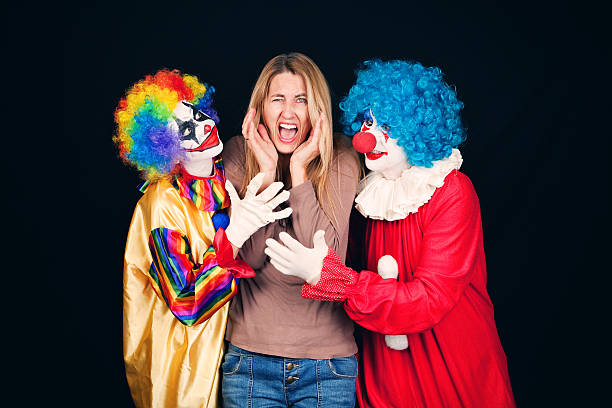
Portraying the clown’s demeanor and behavior
Portraying the clown’s demeanor and behavior is a vivid exercise in the art of duality. Behind the exaggerated smiles and playful antics lies a complex character who waltzes on the fine line between hilarity and melancholy.
The clown’s demeanor is a pendulum that swings between uproarious laughter and subtle, poignant sorrow. They may stumble into slapstick antics that bring gales of mirth, only to suddenly reveal a somber gaze that hints at deeper reflections.
It’s a performance that toys with the audience’s emotions, where mischief and mischief and mischief and a hint of vulnerability become indistinguishable.
The clown’s behavior is an embodiment of paradox, inviting readers to explore the intricacies of human nature – the juxtaposition of joy and sorrow, the absurd and the profound.
In this captivating dance of contrasts, the clown’s demeanor and behavior provide a stage for readers to ponder the intricate interplay of emotions that define the human experience.
Revealing the clown’s psychological state and motivation
Revealing the clown’s psychological state and motivation is like deciphering an enigmatic riddle wrapped in a jest. Beneath the façade of painted smiles and whimsical antics, there often lies a complex, even tormented psyche.
Their motivations can be as elusive as the laughter they provoke, whether it’s a desire to entertain, to mask personal pain, or to embody chaos itself. It’s in the subtle glimmers of vulnerability, the fleeting moments of introspection that we glimpse their humanity.
These characters might be driven by a yearning for connection or a quest for catharsis, offering readers a profound insight into the human need for meaning and self-expression.
As the clown’s layers are peeled back, the dichotomy of humor and tragedy unravels, revealing the intricate web of emotions that fuel their actions, making them all the more relatable and intriguing for readers who seek to unravel the mystery of these complex characters.
Using Metaphor and Symbolism
Using metaphor and symbolism in writing is akin to painting with words, where each phrase becomes a brushstroke on the canvas of the reader’s imagination.
Metaphors are the hidden treasures of the narrative world, allowing abstract concepts to take on tangible forms, like emotions sculpted into characters or dreams woven into settings.
Symbolism, on the other hand, is the literary alchemy that transforms everyday objects or events into profound signifiers, a secret language that communicates deeper meanings.
In the dance between metaphor and symbolism, writers become sorcerers, conjuring connections that transcend the surface of the story, imbuing it with layers of subtext and thematic richness.
Every metaphor and symbol is a doorway to interpretation, an invitation for readers to embark on an intellectual and emotional journey that transcends the confines of the written page, making the story not just a tale, but an experience that resonates long after the last word is read.
Building Tension and Suspense
Building tension and suspense in a story is akin to orchestrating a symphony of readers’ racing hearts and baited breaths. It’s the art of weaving a narrative web that ensnares the imagination, as anticipation thrums through each word and paragraph.
Like a skilled puppeteer, writers manipulate the strings of uncertainty and intrigue, leading readers deeper into a labyrinth of uncertainty.
Foreshadowing becomes a whispered promise of revelations to come, while pacing is the rhythmic beat of a thrilling drum, propelling the plot forward.
In this delicate dance of narrative, readers become willingly entangled in a world where the unknown looms large, and the outcome remains tantalizingly veiled.
Building tension and suspense is the literary equivalent of a rollercoaster’s climb to the peak, and with each twist and turn, readers experience the thrilling plunge into the heart of the story, where secrets unravel, and the pulse of the narrative quickens.
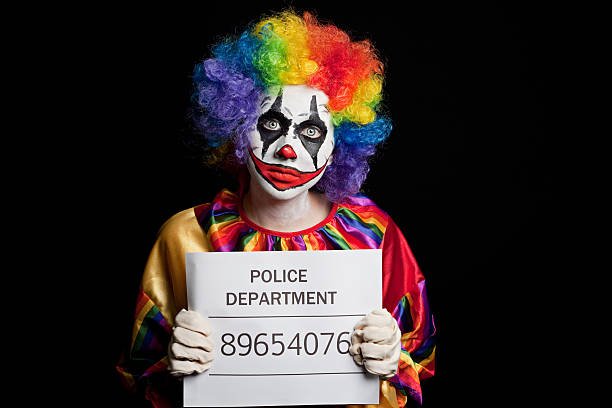
Comparisons and Contrasts
Comparisons and contrasts in writing are like the twin stars in the constellation of narrative depth. They are the yin and yang, the light and shadow, and the literary kaleidoscope that reveals the beauty of difference and the power of similarity.
Through these linguistic tools, authors unveil the nuanced layers of their characters, themes, and settings. Comparisons are the magnifying glass that scrutinizes the minutiae, illuminating details that might otherwise go unnoticed, while contrasts are the sculptor’s chisel, carving out the essence of what makes one element distinct from another.
This interplay of likeness and divergence breathes life into the story, setting characters on a journey of self-discovery or painting thematic canvases that resonate with readers’ experiences.
In the dance of comparisons and contrasts, writers invite readers to explore the infinite shades of human complexity and the universal truths that bind us all, offering them an immersive, thought-provoking literary experience.
Contrasting the scary clown with more traditional, friendly clowns
Contrasting the scary clown with their more traditional, friendly counterparts is like holding a distorted mirror to our perception of joy and humor.
While the classic, cheerful clown is a symbol of innocent mirth and boundless exuberance, the scary clown becomes a dark reflection of this archetype.
The vibrant, welcoming colors of the traditional clown’s attire, a symbol of happiness, metamorphose into a disconcerting carnival of horror when draped over the malevolent figure.
Beneath the playful facade, the scary clown conceals a darker agenda, turning laughter into an unsettling echo and merriment into dread.
This sharp contrast underscores the depth of human emotions and the spectrum of interpretations that clowns can embody, allowing readers to navigate the intriguing nuances of the clown’s character, from the joyous to the chilling, and explore the thin line that separates laughter from terror.
Crafting a Memorable Closing
Crafting a memorable closing in a piece of writing is akin to leaving an indelible mark on the reader’s soul, a final stroke on the canvas of their imagination.
It’s the last bite of a sumptuous meal, the lingering note of a haunting melody, the parting words in a love letter.
The closing is the ultimate gift, where loose ends are elegantly tied, and the essence of the narrative crystallizes. It can be a profound revelation that leaves readers pondering life’s mysteries or a poignant farewell that tugs at their heartstrings.
It’s a literary flourish that echoes long after the book is closed or the screen turned off, an invitation to reflect and remember.
Crafting this concluding act is the writer’s promise that the journey doesn’t truly end; it merely evolves, as the narrative continues to live in the reader’s mind.
In the art of the memorable closing, writers bid farewell, but their words linger like an everlasting embrace, etching themselves into the reader’s memory.
Frequently Asked Questions (FAQ) about How To Describe A Scary Clown in Writing
Why is describing a scary clown in writing different from other descriptions?
Describing a scary clown is unique because it involves navigating the fine line between humor and terror. It requires an understanding of the psychological elements that make clowns scary, going beyond physical appearance to capture the essence of fear and fascination.
What are the key elements to consider when describing a scary clown?
Important elements include the clown’s physical appearance, makeup, demeanor, and props. Additionally, it’s essential to consider the character’s backstory and motivations, using metaphor and symbolism to create depth.
How can I make the description more engaging for the reader?
You can make the description more engaging by using sensory details, incorporating weather and lighting effects to set the mood, and building tension and suspense to keep the reader hooked.
Can a scary clown description have deeper meanings or social commentary?
Absolutely. Scary clown descriptions can often serve as metaphors for broader themes, such as the disruption of societal norms or the exploration of the human capacity for both amusement and dread.
How do I ensure that my description of a scary clown resonates with readers?
Crafting a memorable closing is crucial. The ending should leave a lasting impression or a thought-provoking reflection to keep the reader haunted by the narrative long after they’ve finished reading.
What should I consider when deciding on the perspective for describing a scary clown?
The choice of narrative perspective, such as first-person or third-person, can influence the reader’s connection with the character. Consider the impact of each perspective on the story’s emotional resonance.
Can I use comparisons and contrasts with other characters or archetypes to make the scary clown description more compelling?
Yes, contrasting the scary clown with traditional, friendly clowns or other frightening figures can deepen the reader’s understanding of the character and enhance the narrative’s impact.
How can I effectively utilize metaphor and symbolism when describing a scary clown?
Metaphor and symbolism can be used to convey deeper meaning or emotional layers. By employing these literary devices thoughtfully, you can evoke powerful and lasting impressions.
What’s the importance of pre-writing considerations when describing a scary clown?
Pre-writing considerations, such as defining your purpose and identifying your target audience, help provide a clear direction for your description and ensure that it resonates with the intended readers.
Where can I find inspiration for describing a scary clown?
Inspiration can be drawn from various sources, including literature, films, and real-life clowning traditions. Exploring the history and evolution of clowns in popular culture can also spark creative ideas for your description.
Conclusion
In the realms of storytelling, the ability to describe a scary clown in writing is a testament to a writer’s mastery over the delicate balance between humor and horror.
It is a craft that allows us to unravel the complexities of the human psyche, exploring the eerie fascination that lies within our collective fears.
As we conclude our exploration of this unsettling archetype, we find that the description of a scary clown transcends mere words on a page.
It is an exercise in understanding the depths of human emotion, a dance with the enigmatic and a challenge to tap into the darkest corners of the human experience.
Through vivid and evocative language, we have ventured into the heart of the paradox, where laughter and terror coexist, and where the clown becomes a mirror reflecting our most profound anxieties.
As writers, we carry the power to conjure the chilling essence of the scary clown, inviting readers to confront their deepest fears and engage with the tantalizing mystery of these unsettling figures.
Thus, in the realm of storytelling, the description of a scary clown is more than mere words; it’s an exploration of the human soul and an invitation for readers to face the inexplicable, making every word written a haunting, unforgettable experience.




